Beyer-Garratts
My time with the first, last and largest. And, their miniatures in the 21st Century.
The first K1 of 1909
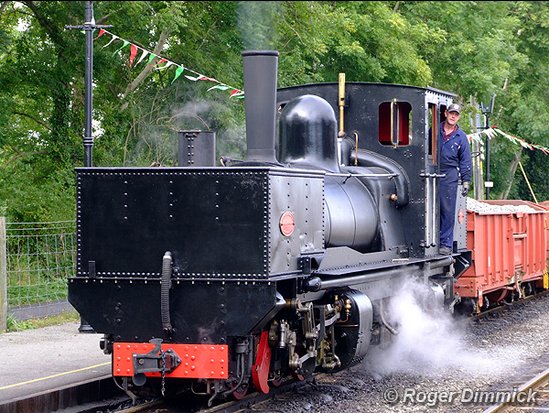
Arriving at Dinas on the Welsh Highland Railway with a loaded ballast train on Beyer-Garratt K1
This was the first train for the loco using coal fuel since the 1920's
September 2007
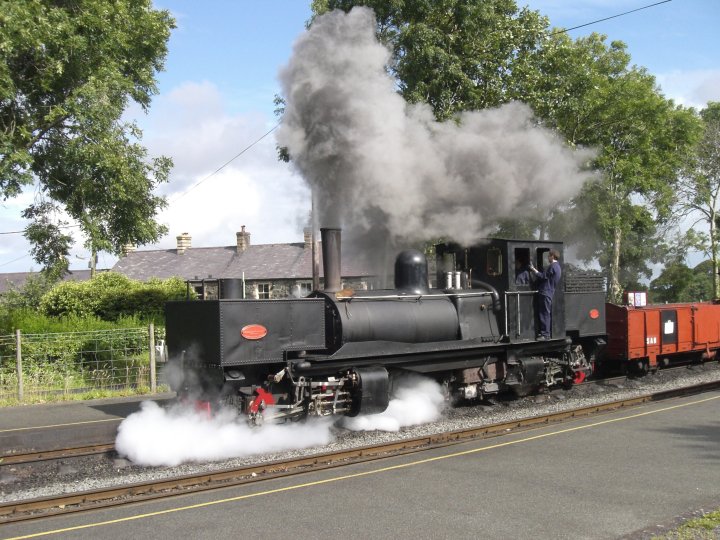
K1 departing Dinas, July 2008
Owen Chapman image
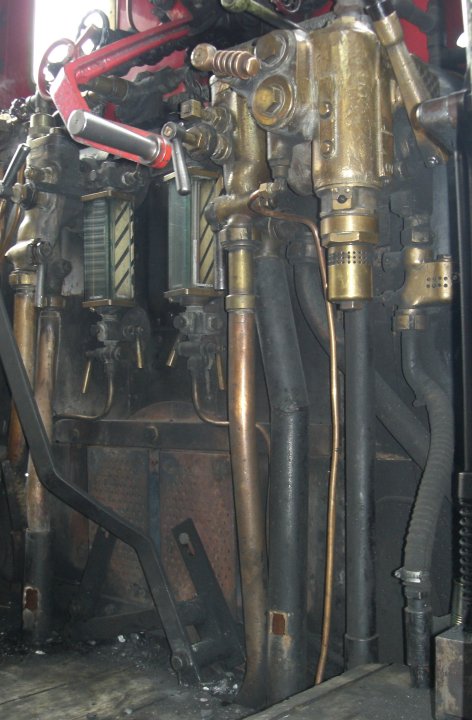
Cab of K1 showing injectors, overflow pipes, firebox door and brake manifold
Components worked on in 2007 to enable the loco to enter traffic.
Owen Chapman image
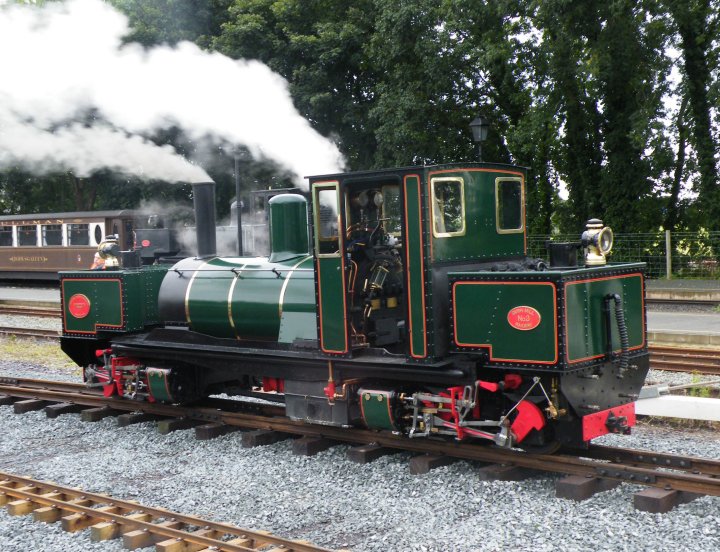
15" gauge K1 that also formally ran in Tasmania, sitting in the yard at Dinas North Wales as the original K1 passes by on a service train.
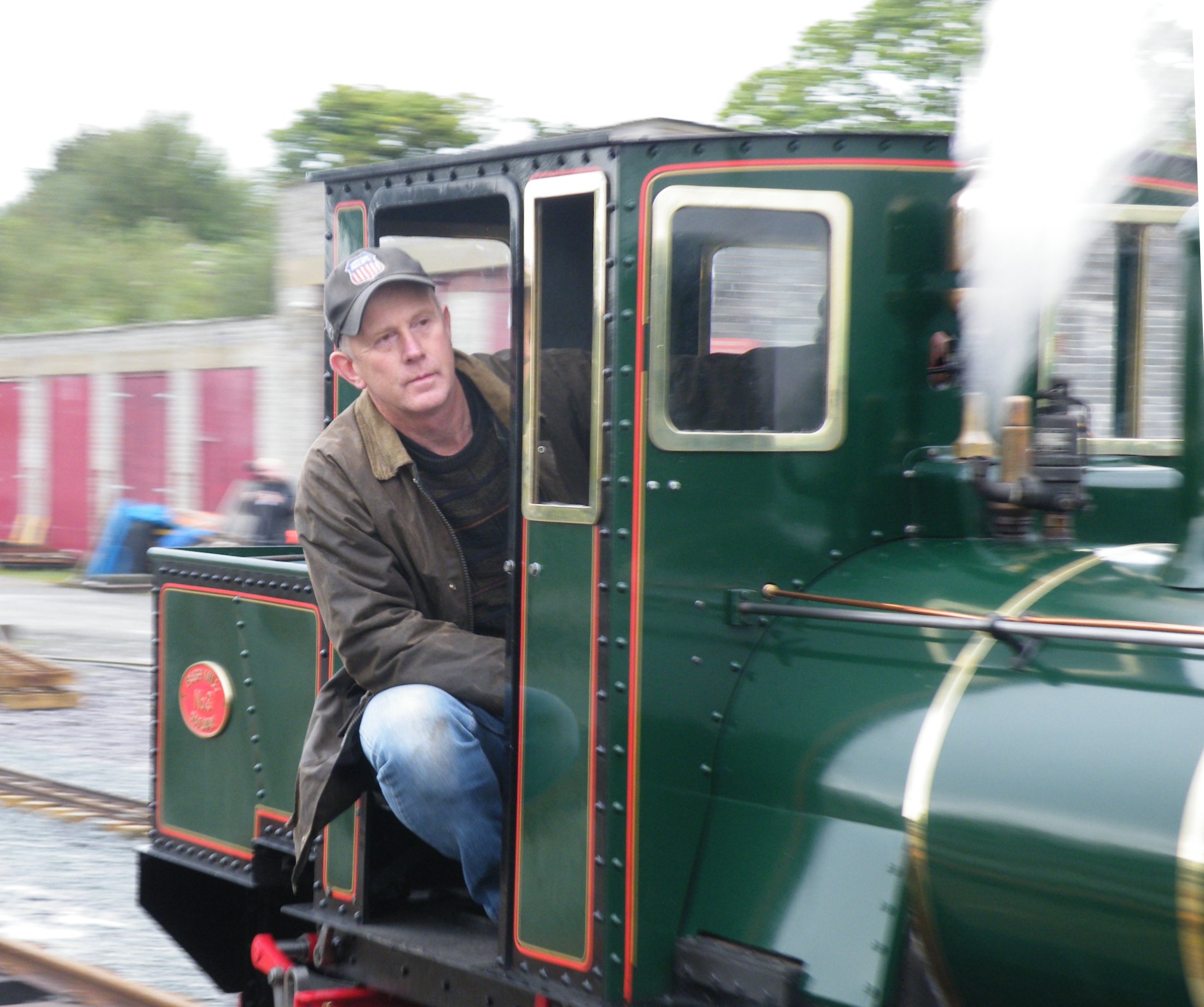
Driving the 15" gauge K1 in the yard at Dinas, North Wales in September 2008
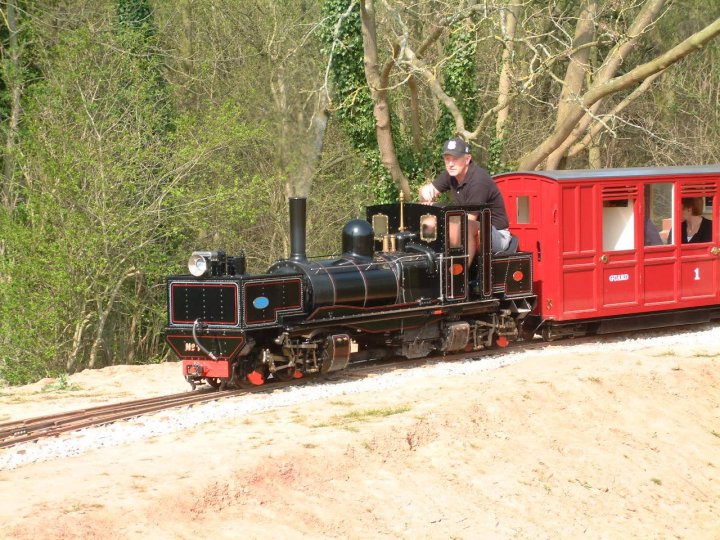
Driving the 3.75" scale Beyer-Garratt K1, Herefordshire, England
April 2007
Gavin Hamilton image
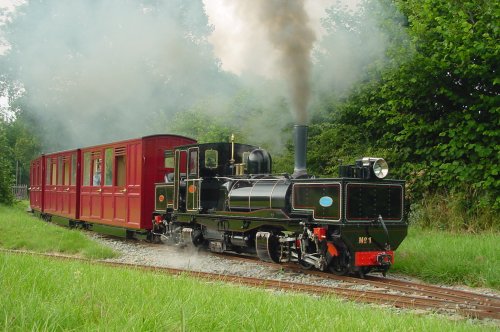
The Last, NG/G16, 143
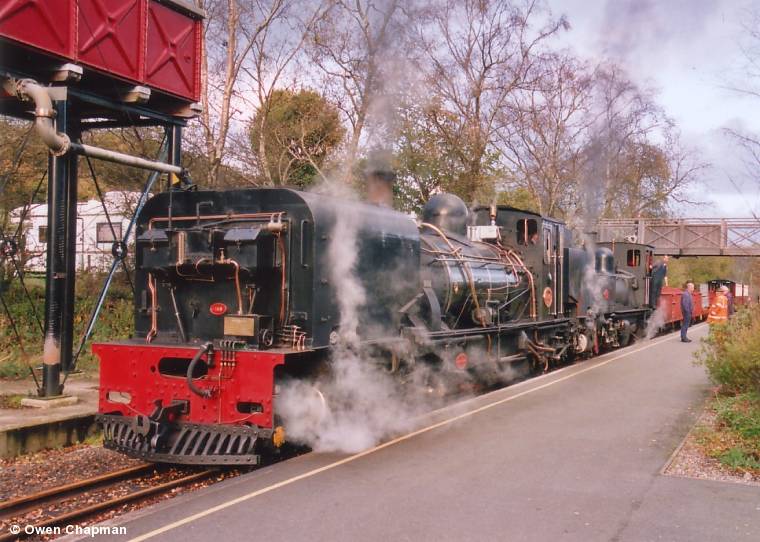
Beyer-Garratt NG/G16 143 built in 1958 with K1 in tow.
Both now working on the Welsh Highland Railway
I was privileged to drive 143 on an empty stock working from Carnarvon to Dinas in September 2007
This image by Owen Chapman circa 2005
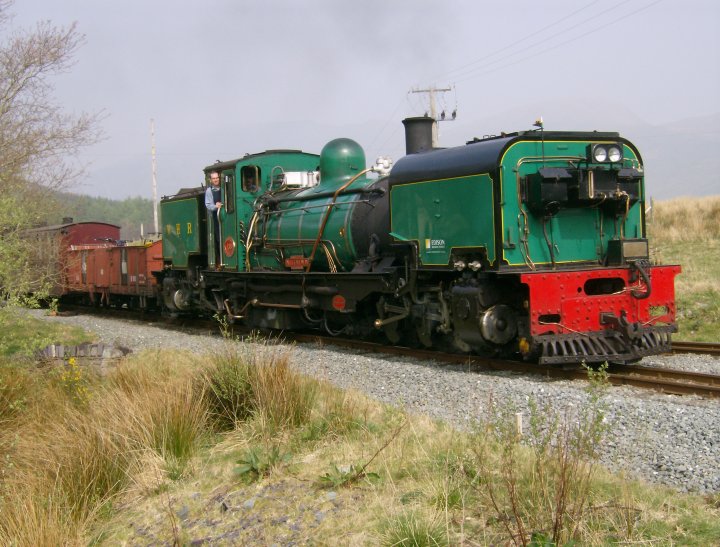
Also from the last batch built in 1958, Beyer-Garratt NG/G16 138
April 2007
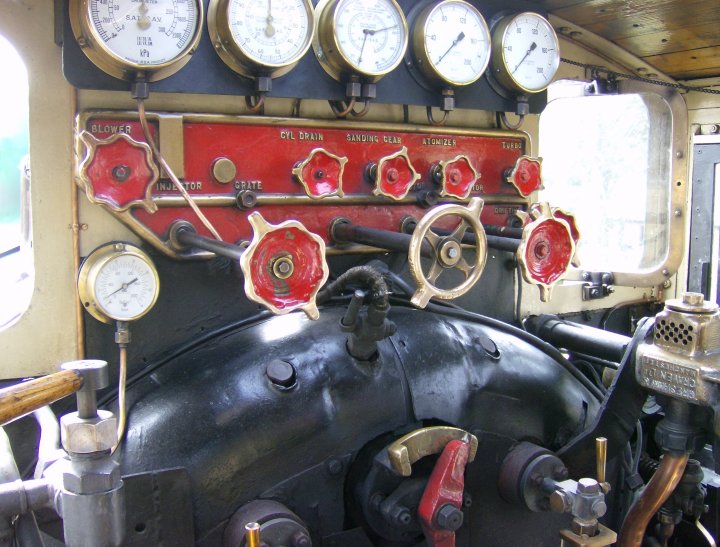
Cab of NG/G16 138
April 2007
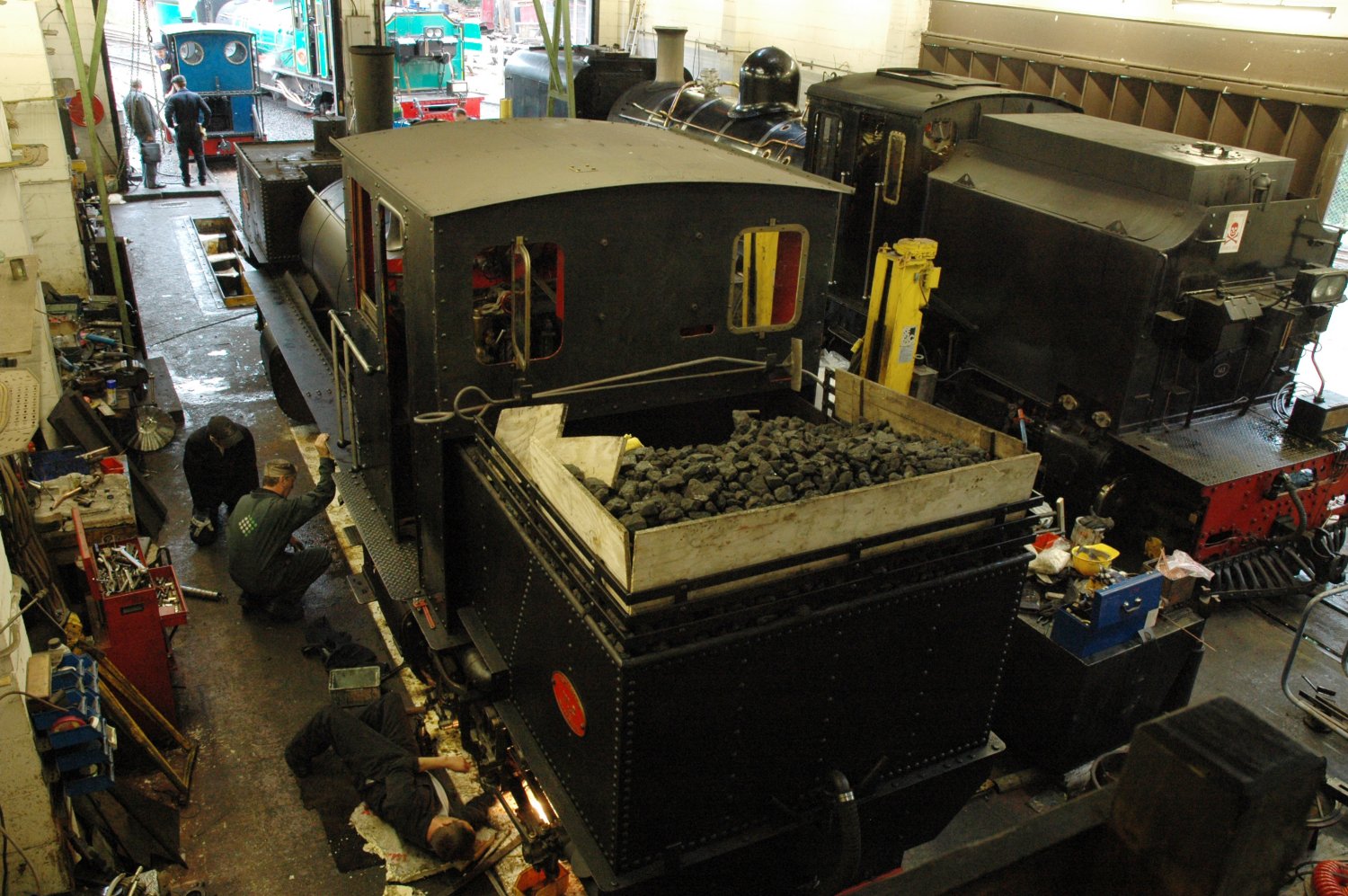
K1, 143 and 138 at the Dinas loco shed on the Welsh Highland Railway
K1 is in it's first weekend with coal fuel since the 1920's
The following week the coal rails installed to allow enough coal to be carried were raised to 6 high and the boards disposed of.
Bryn Morgan is attending to the lubrication feed to the axel boxes while Alf and Mick check the ash pan dampers.
September 2007
Steve Sedgwick image
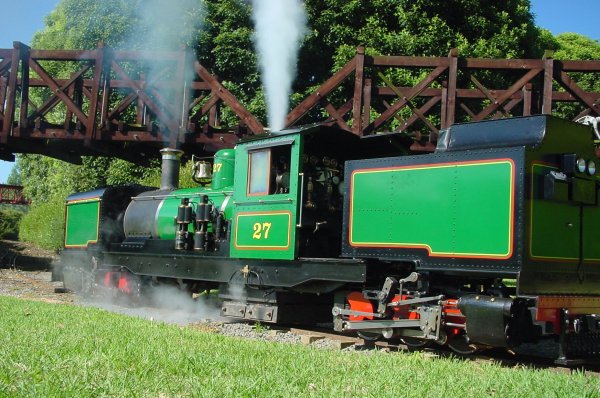
3.75" scale NG/G16 Beyer-Garratt in New Zealand
January 2004
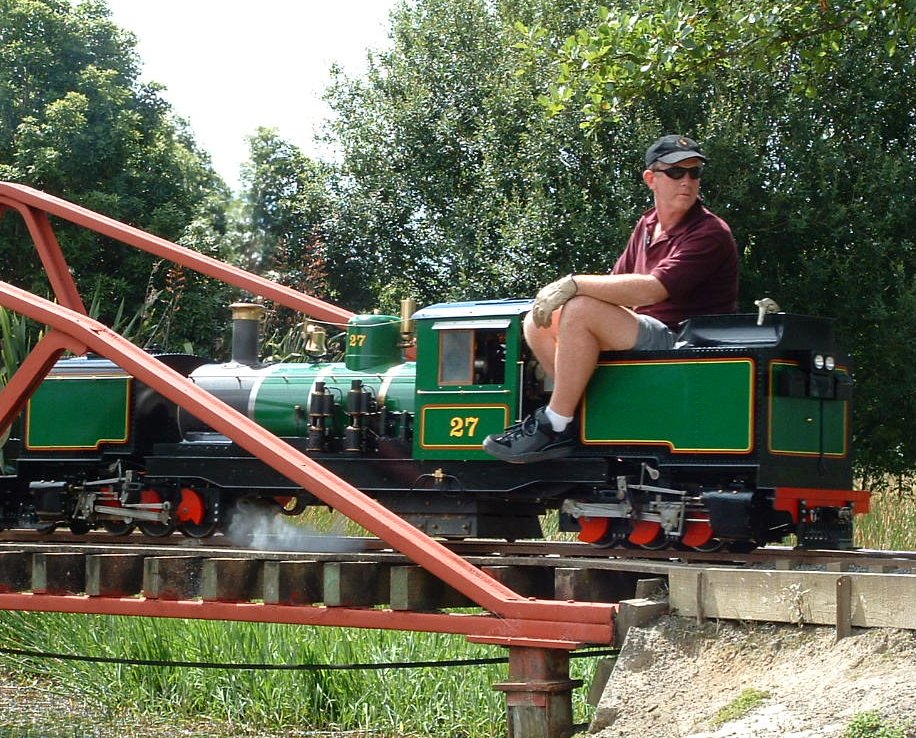
Driving the 3.75" scale NG/G16 in New Zealand
January 2004

Cab of 3.75" scale NG/G16
January 2004
The Largest*, East African Railways 59 class
5918 "Mount Gelai"
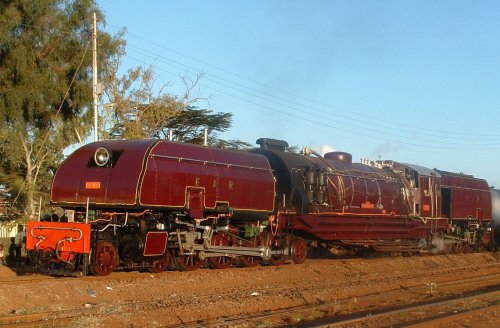
East African 59 class 5918 at the head of a special working to promote tourism in Kenya
December 2004
Click here to see 5918 being removed from the museum in 2001
Click here to see 5918 working in December 2004
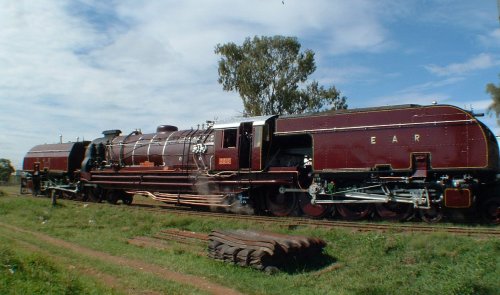
East African 59 class 5918 "Mount Gelai at Athi River, Kenya, waiting for the road with a test train.
December 2004
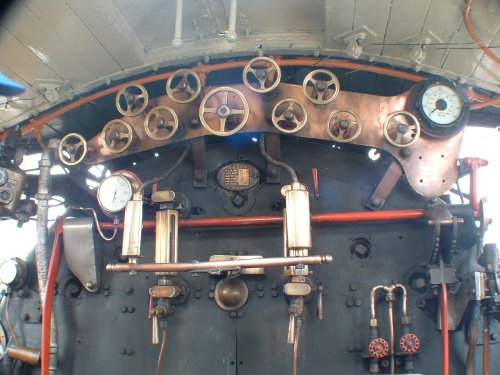
Cab of East African 59 class 5918 "Mount Gelai"
December 2004
The missing instrument on the right is actually the location of a clock. The clock was the personal property of the driver Kirpal Singh of Mombasa. When he retired in 1980, after the driving the locomotive for 15 years, he took the clock home.
Click here to see 5918 emerging from the works on to the traverser in December 2004
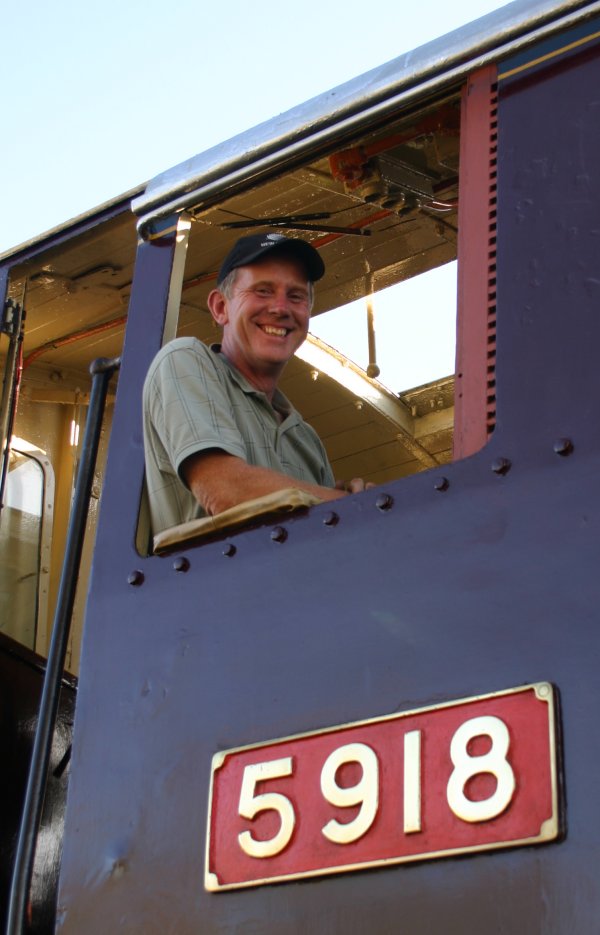
A smiling Trevor Heath the day of my drive of 5918
December 2004
Graham Roberts image
More images and narrative from Kenya in 2004 can be found here
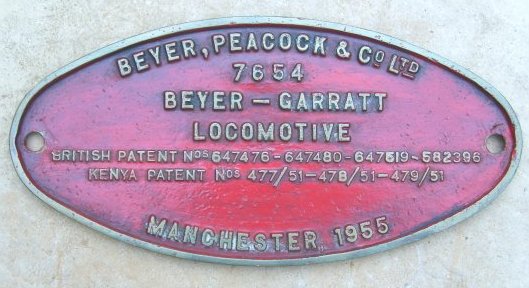
Builders plate from East African 59 class 5923 "Mount Longonot"
Owned by Graham Kelsey
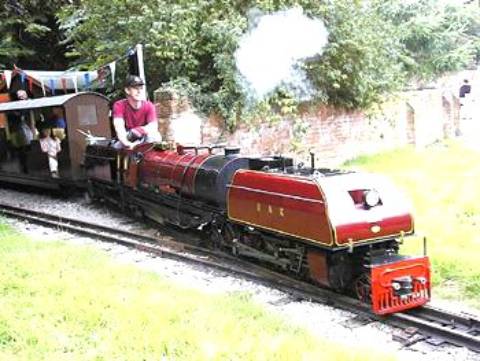
Driving the 2" scale East African 59 class 5928 "Mount Kilimanjaro"
September 2001
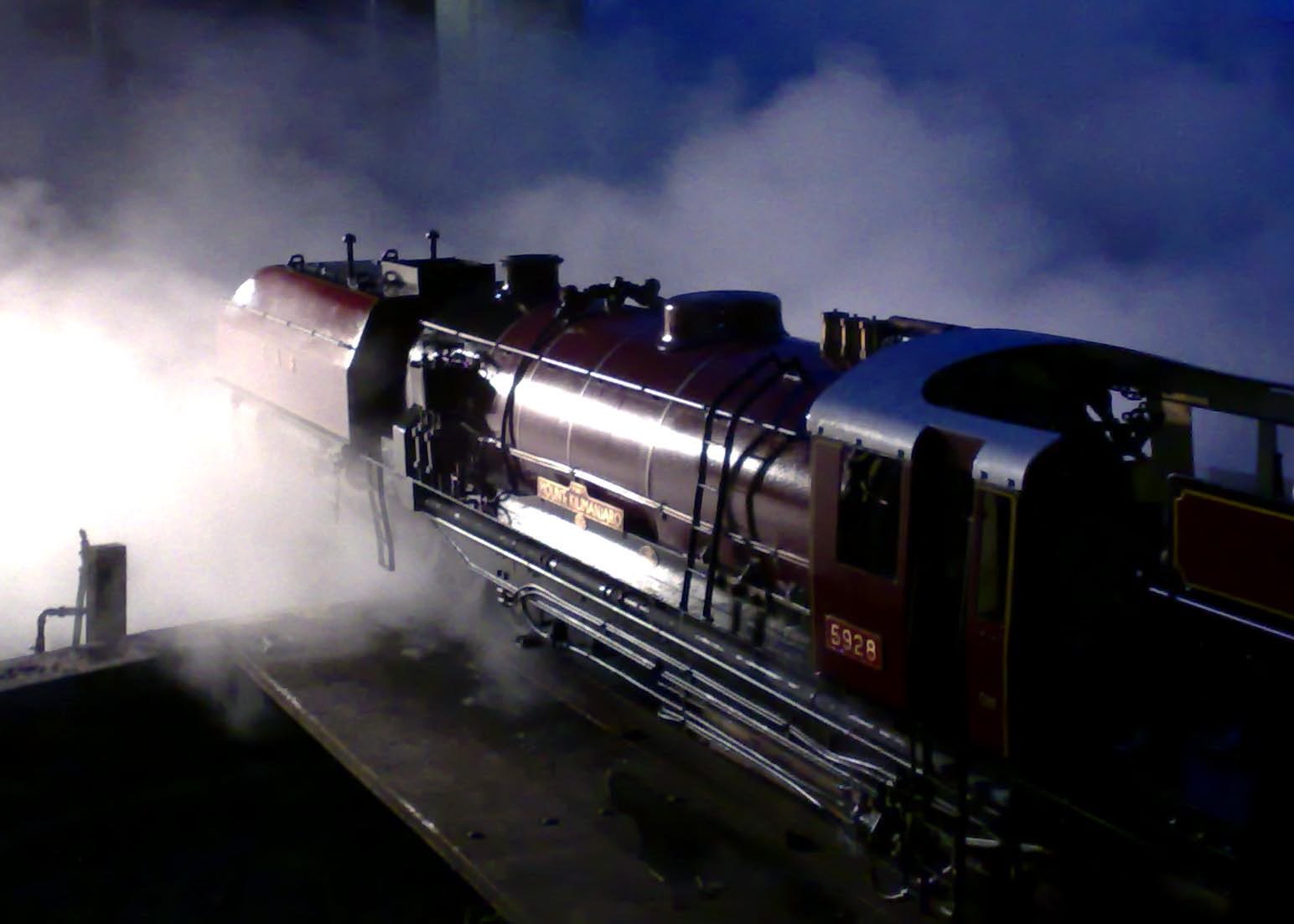
5928 at the end of the day. Weston Park, Shropshire England
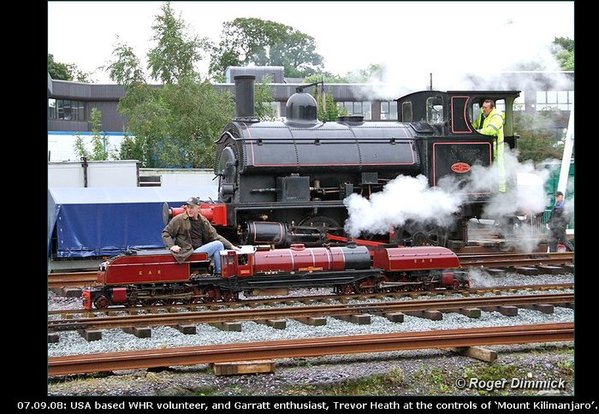
Dinas Yard of the Welsh Highland Railway, September 2008
Click here to see a video of 5928 operating.
The East African 59 class has four "siblings" from the same era although none are as powerful.
The New South Wales Railway
AD60 Class
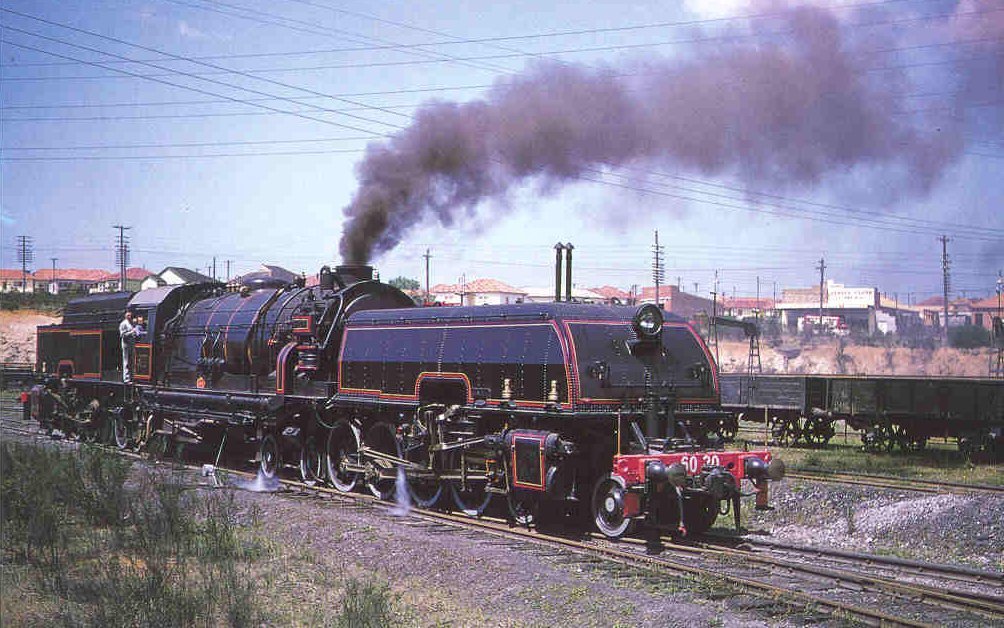
New South Wales Railway AD60 class Beyer-Garratt 6020
Image taken in 1955
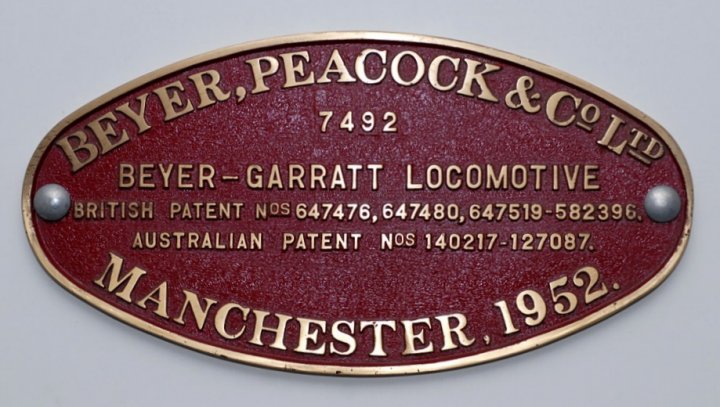
Builders plate from AD60 6020 owned by Richard Whitford
Not the 21st century but we can hope that a current operating image of 6029 will be possible within this decade.
See here for the latest news on the restoration.
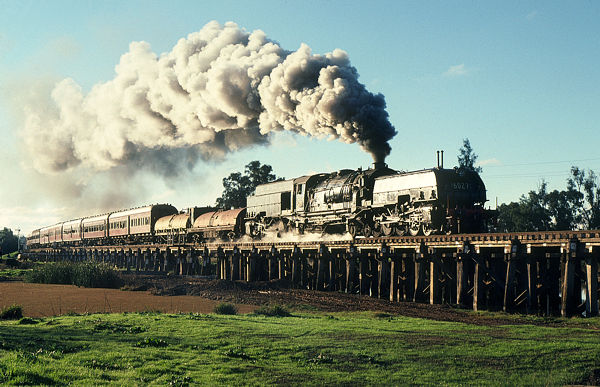
New South Wales Railway AD60 6029
Excursion service in June 1981
Dennis Rittson image
New South Wales Railway. AD60 6039 at Dorrigo
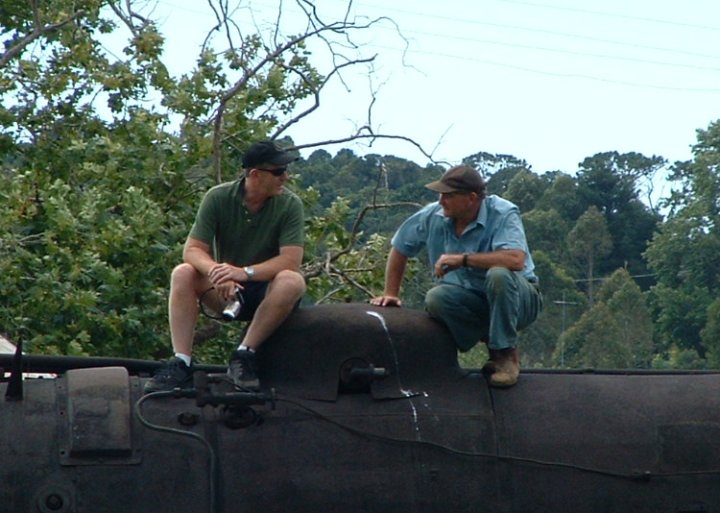
Sitting on the dome cover of AD60 6039 at Dorrigo chatting to custodian Keith Jones
January 2004
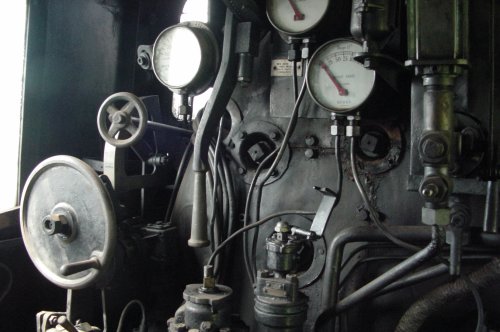
Drivers controls on AD60 6039
January 2004
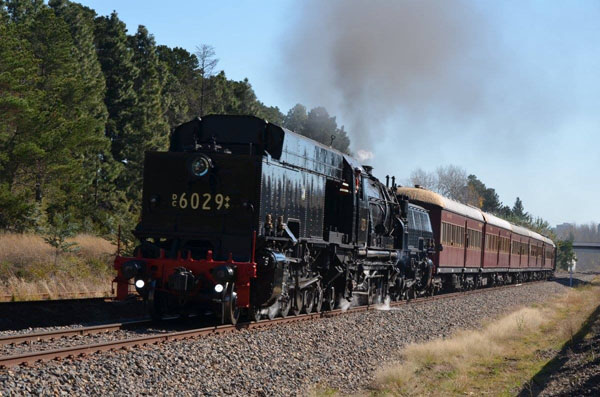
6029 back in service after 35 years. That is I leaning out of the cab window
May 2015
Following our time in Melbourne, we headed to Canberra to see newly restored NSWGR AD60 class Garratt 6029 in the knowledge that it would be cold in the shed between runs.
Sure enough upon arrival, there it was with the bunker sticking out of the shed door. Closer examination showed that all the plugs were removed from the boiler in order to perform a washout plus there was some damage to the brick arch from a prior run.
After taking some images, I was able to meet Ben Elliot who was repacking piston glands on the rear engine. While the front engine (not originally from 6029) is in excellent condition, the rear engine is nearing it's service limits and will be subject to some motion work in the near future.
A little later their new operations manager Les Coulton arrived.
It transpired that both of their other locomotives are out of action and that if a local excursion scheduled for the following Sunday was to run behind steam as advertised, then 6029 would be on duty. However before that could happen, it was now 12 months since the first steaming and the inspector was wanting to have a look at the boiler in addition to the arch and other running repairs.
Should all that be completed, 6029 would run the following Sunday with Les having his first turn in the left seat (drivers side) and he offered to take me with him.
And so we left Canberra early and headed up the NSW coast to see friends with the knowledge that we might indeed see the big one in steam.
After a great week up on the NSW coast, we received a message on the Friday that the work was complete but that the inspector wanted to see the loco in steam on the Saturday for an accumulation test (over-firing test) before he would issue a new 12 month ticket.
We headed back to Canberra.
Everything turned out OK, and the over-firing test was passed. Saturday afternoon, as the loco was in steam, it was put to work assembling a freight train of containers for Sydney that weighed 1400 tons which the loco easily moved within the Canberra yard limits.
Come Sunday morning I arrived at the yard at 7 am to find the loco in light steam. After further two hours raising a full head of steam, a good oiling round and a good wash, the loco was ready for the day's excursion to Bungendore.
It was an enjoyable cab ride with the crew. An interesting run in rolling hills with death wish Kangaroo leaping in front of the loco with inches to spare, while a herd of wallabies hopped along side. Quite a lot of people out photographing the run and a lot of happy passengers.
For me, it was the end of a journey. Beyer - Peacock built three different modern Garratt classes in the 1950's with the slant sided front tanks and many other features. The EAR 59th in Kenya, the Rhodesian 20th and the NSW 60th. In the past 15 years I've been able to spend cab time on all three and have even driven the largest, the EAR 59th. Who would have thought this possible in the 21st century? but with a lot of hard work by many and even a bit by myself, a lot of luck and much help, it came to be.
In Canberra, many thanks to Graeme and Amelia Stanley, Alan Gardner, Ben Elliot, Les Coulton, Carl Linkenbagh, Shaun Barker and Malcom Cluett for a lot of hard work the week before and great day out.
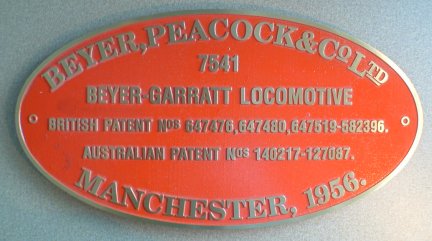
Replica builders plate for AD60 6039 presented by the custodian of 6039, Keith Jones upon my visit to Dorrigo, NSW
January 2004
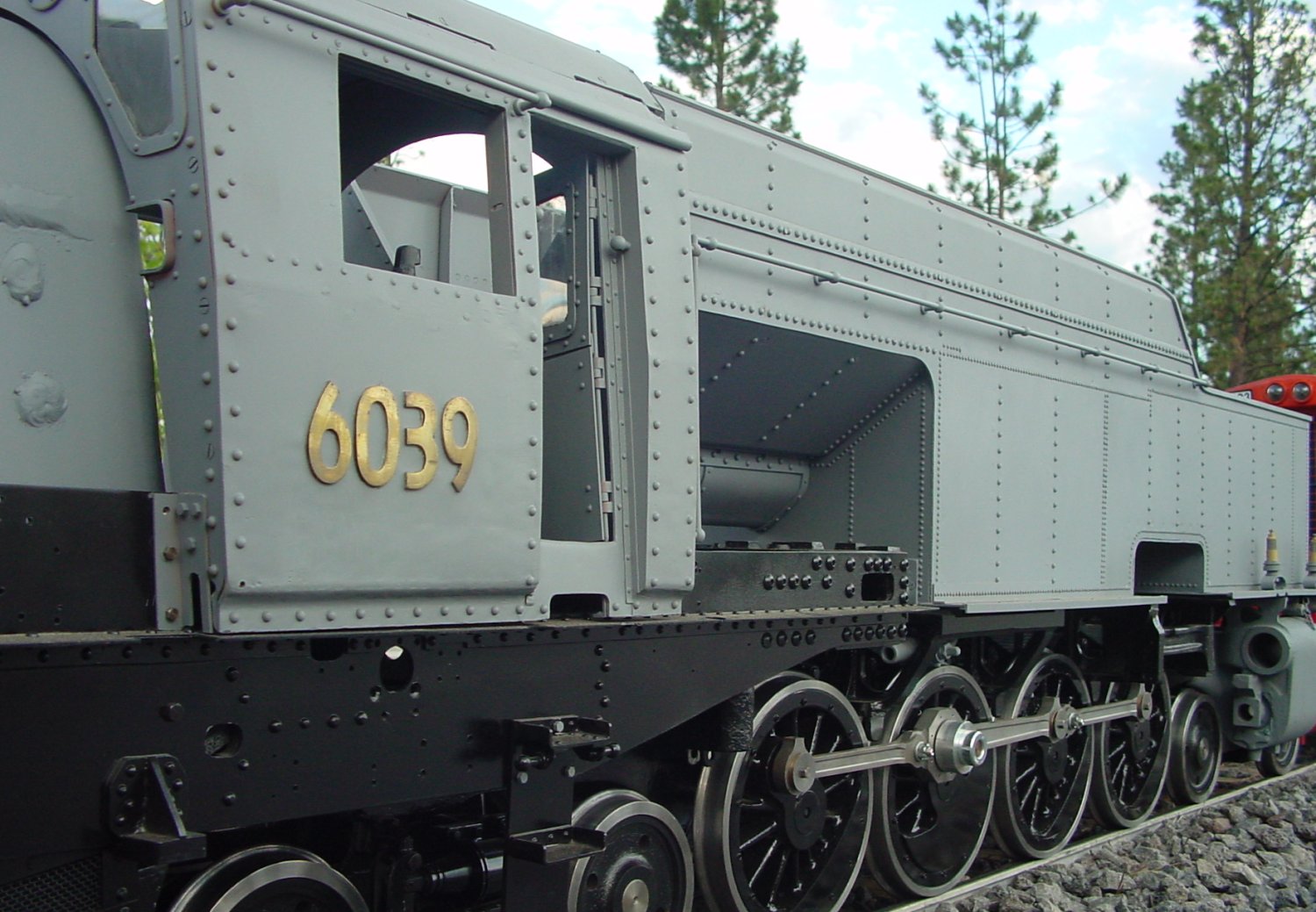
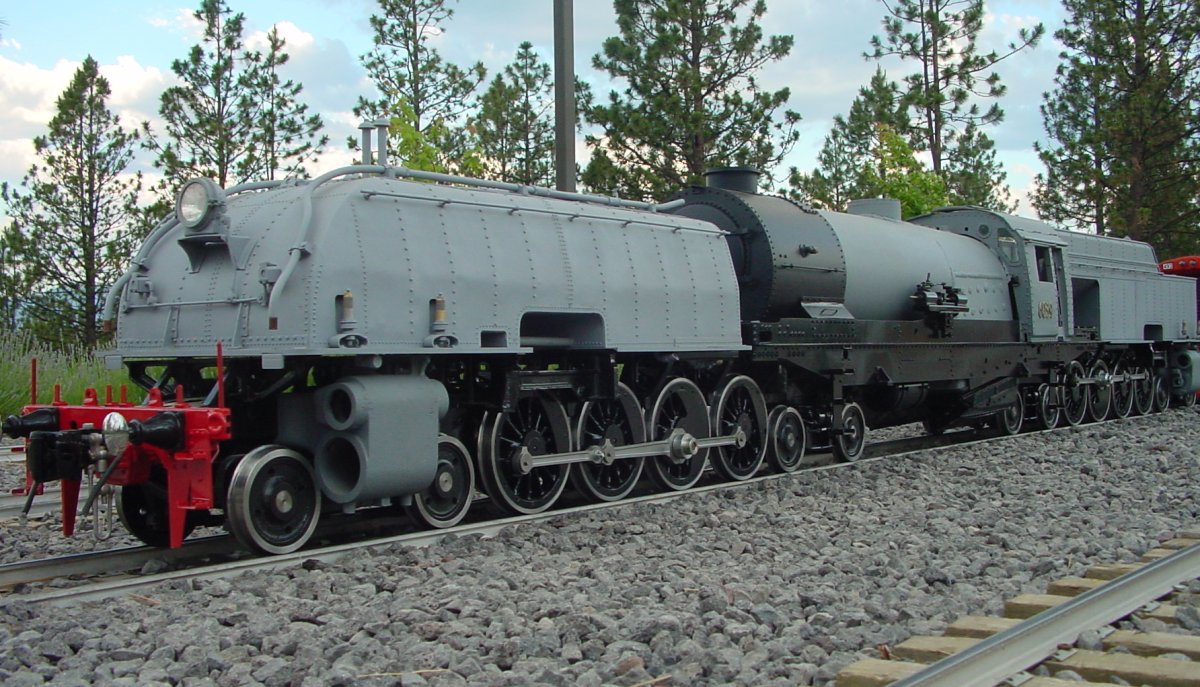
Two views of my personal locomotive, the 1.5" scale AD60 6039
July 2003
Click here to see a video clip of this loco on test
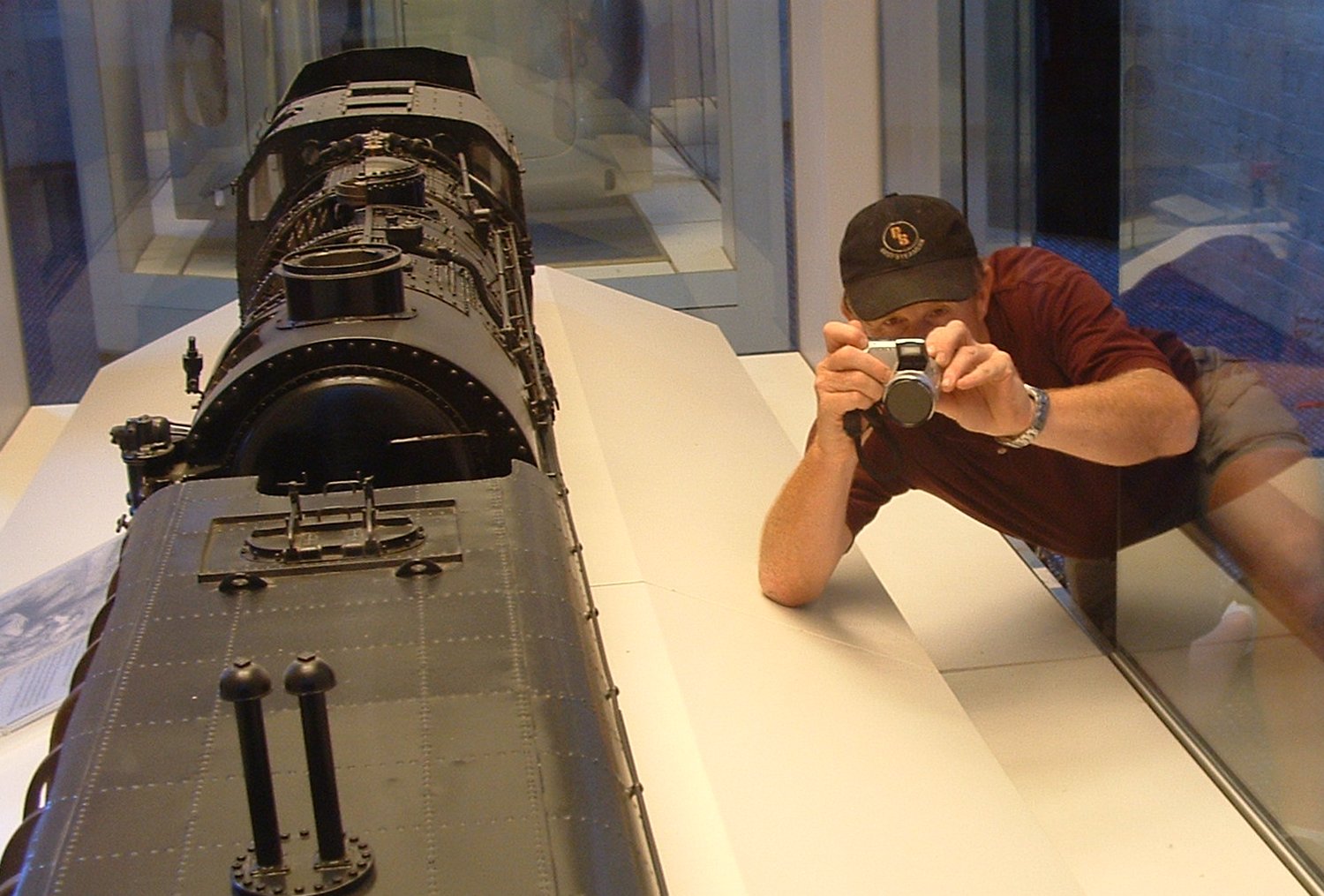
Photographing details (with special permission) on the sectioned AD60 at the Powerhouse Museum in Sydney, Australia
January 2004
The National Railway of Zimbabwe 20th class

National Railways of Zimbabwe 20th class 730 (originally numbered 705) on Bulawayo shed in July 2001 prior to hauling a revenue freight to Plumtree on the Botswana border.
This locomotive remains basically in serviceable condition today although it has not been used since 2001
Click here to see 730 and 740 working to and from Plumtree in July 2001
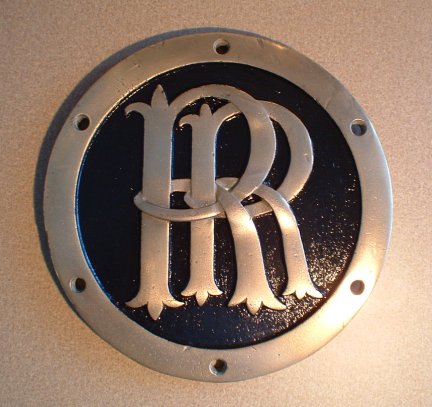
An original smokebox insignia from a Rhodesian locomotive
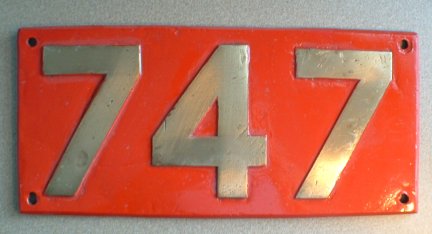
The original front pilot beam number plate from the 20th named "Jumbo"
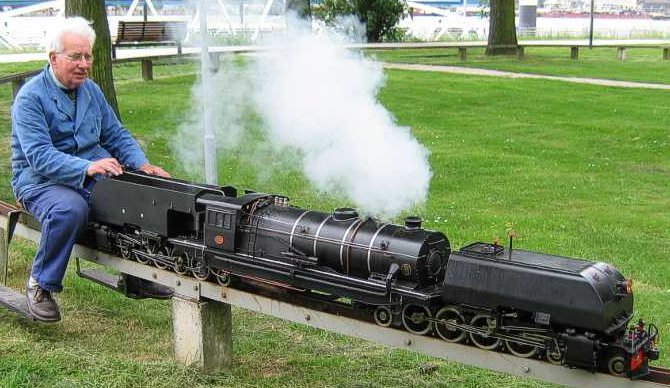
This 3.5" gauge 20th built by Jan Kouwen is based in the Netherlands
The miniature version of the insignia can be seen on the side of the smokebox
Click here to see a video clip of this loco in action
South African Railways
GMA/M
There may be an opportunity to work on the restoration of South African Railways GMAM 4083 now resident in steam friendly New Zealand sometime in the future.
Here is the loco standing outside the Mainline steam loco shed at Parnell, Auckland in April 2008
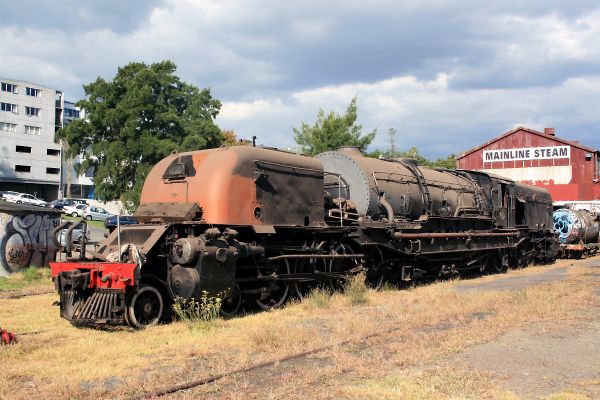
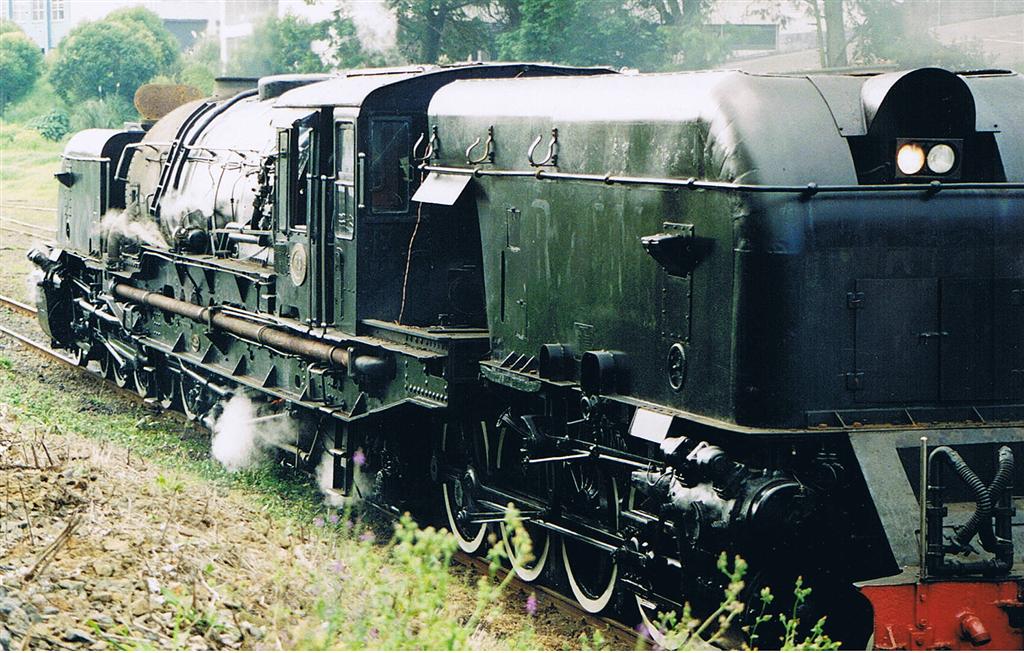
4083 March 1997 in Auckland, NZ
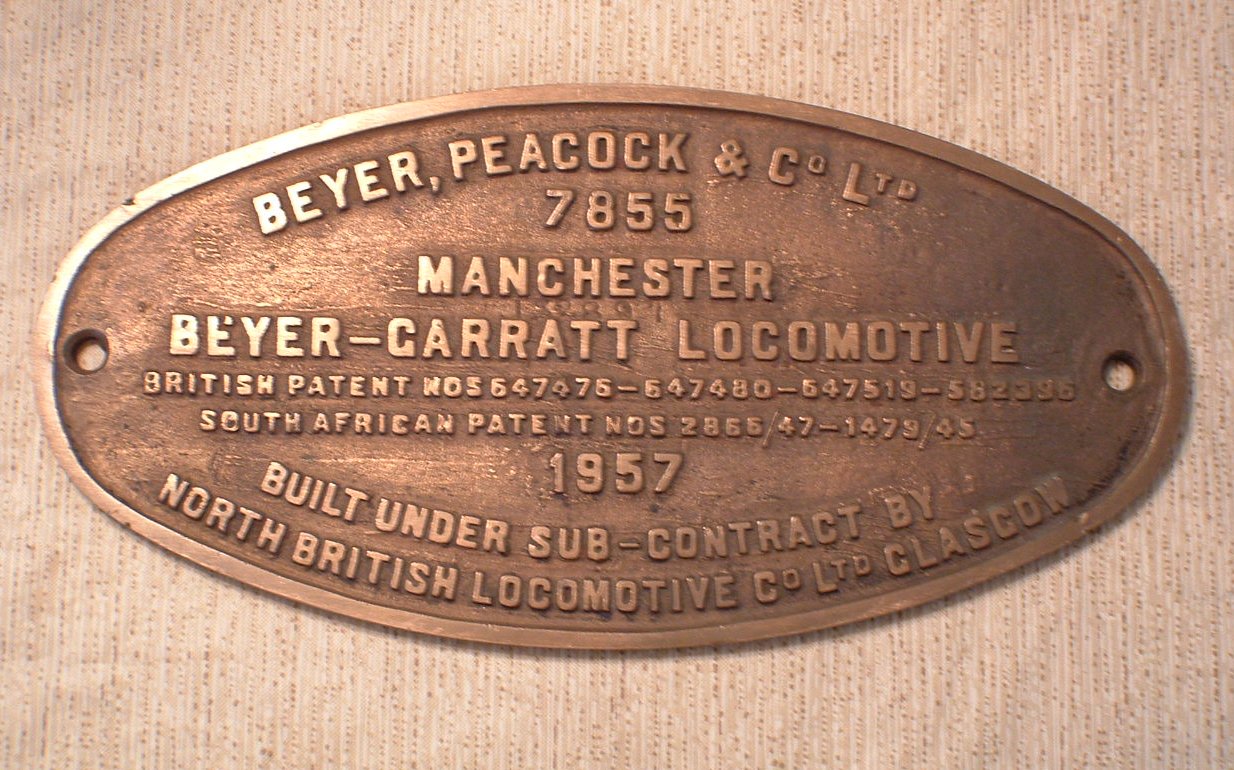
Builders plate from the very last GMA/M 4140, the last large Garratt built in the UK
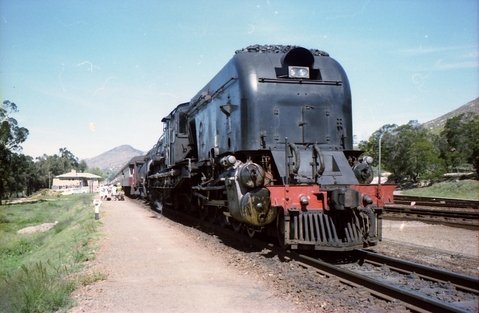
4140 at Camfer, South Africa in 1978
Richard Niven image
If you would like regular updates on the few Garratt's in operating condition, consider joining this group: https://www.facebook.com/groups/205647329774286